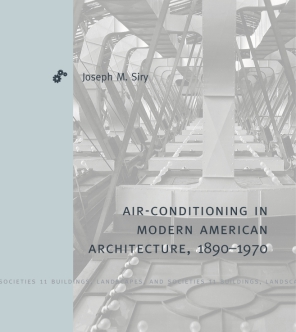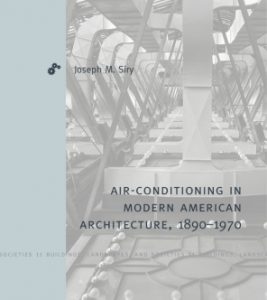Siry’s Book on Air-Conditioning in Modern American Architecture Published

 Joseph Siry, Kenan Professor of the Humanities, professor of art history, is the author of Air-Conditioning in Modern American Architecture, 1890–1970 (Penn State University Press, February 2021).
Joseph Siry, Kenan Professor of the Humanities, professor of art history, is the author of Air-Conditioning in Modern American Architecture, 1890–1970 (Penn State University Press, February 2021).
According to the book’s abstract, Air-Conditioning in Modern American Architecture, 1890–1970 documents how architects made environmental technologies into resources that helped shape their spatial and formal aesthetic. In doing so, it sheds important new light on the ways in which mechanical engineering has been assimilated into the culture of architecture as one facet of its broader modernist project.
Tracing the development and architectural integration of air-conditioning from its origins in the late 19th century to the advent of the environmental movement in the early 1970s, Siry shows how the incorporation of mechanical systems into modernism’s discourse of functionality profoundly shaped the work of some of the movement’s leading architects, such as Dankmar Adler, Louis Sullivan, Frank Lloyd Wright, Ludwig Mies van der Rohe, Gordon Bunshaft, and Louis Kahn. For them, the modernist ideal of functionality was incompletely realized if it did not wholly assimilate heating, cooling, ventilating, and artificial lighting. Bridging the history of technology and the history of architecture, Siry discusses air-conditioning’s technical and social history and provides case studies of buildings by the master architects who brought this technology into the conceptual and formal project of modernism.

